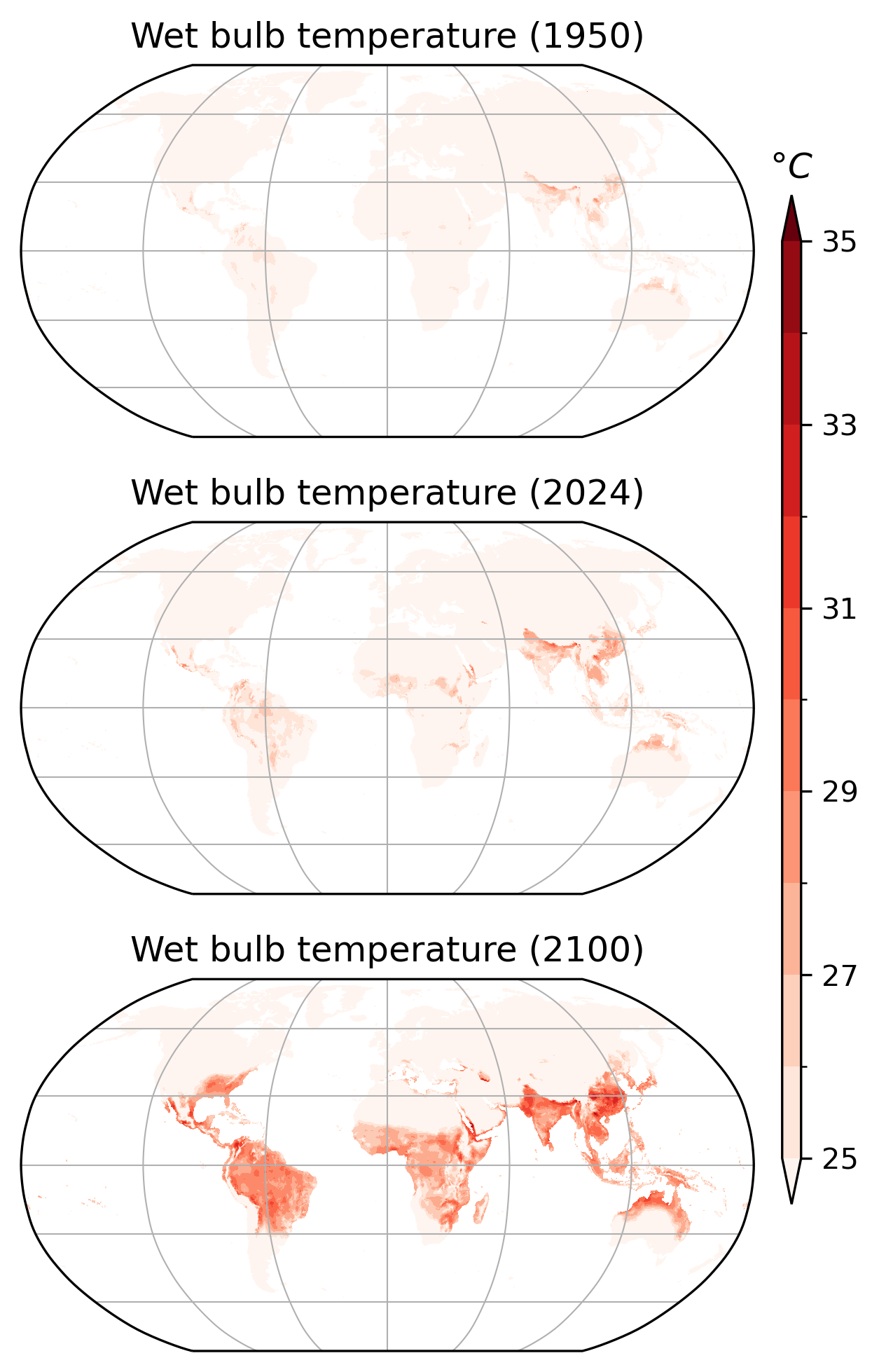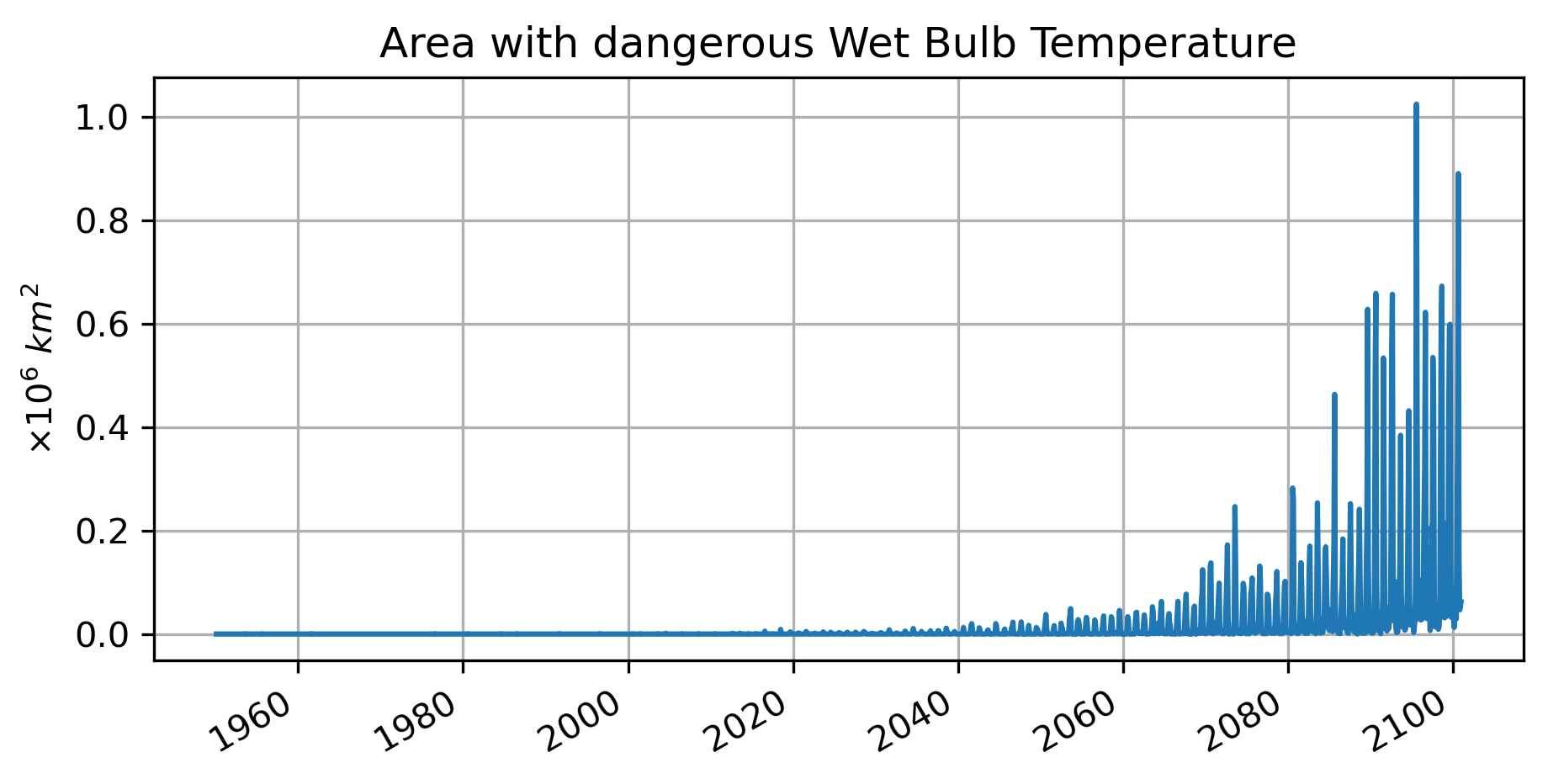Wet-Bulb
This visualisation explores how the wet bulb temperature (WBT) will evolve in a future climate. The WBT is a method to assess the heat stress conditions. When the wet bulb temperature rises to above the temperature of the human body, sweat is no longer able to evaporate which means that the human body is unable to cool itself down. Once this wet bulb temperature is breached the human body will begin to overheat with imminent fatal risks.Exposure to such conditions for more than 6hrs could be fatal to humans!
We explore how WBT will evolve under "business as usual" emissions (RCP 8.5), with a particular focus on the alarming threshold of 35°C at which humans experience hyperthermia. In other words, the thermoregulation of the human body temperature through evapotranspiration increases the risk of death. This will become an imminent risk to human health, particularly in large centres of population. Sherwood & Huber (2010) report that an increase of the WBT of 11-12°C would cover the majority of the human population as currently distributed over the globe.
The Wet bulb formula was computed using the julia package Psychro that follows the definition proposed by Davies-Jones (2008), where:
where \( T_w \) is the wet-bulb temperature in degrees Celsius, \( T \) is the dry air temperature in degrees Celsius, \( RH \) is the relative humidity, and \( P \) is the pressure. For simplicity, we define a constant \( P = 101325.0 Pa \)
Risk
A "critical" WBT for humans, the temperature at which a healthy person could survive for only six hours is usually considered to be 35°C. Under the current climate scenario, by the end of the century there will some regions that during the northern hemisphere summer will surpass consistently this 35°C threshold.



Conclusion
As the wet bulb temperature exceeds 35°C, it requires immediate attention from the general population, governments, communities, and individuals to implement adaptive strategies, such as cooling infrastructure, public awareness campaigns, and emergency response plans. Through this visualisation, we gain insight into the escalating risk posed by wet bulb temperatures exceeding 35°C, compelling us to prioritize climate resilience and safeguard the well-being of communities worldwide.
References
- Sherwood, S. C. & Huber, M. An adaptability limit to climate change due to heat stress. Proc. Natl. Acad. Sci. 107, 9552-9555 (2010).
- Davies-Jones, R. An Efficient and Accurate Method for Computing the Wet-Bulb Temperature along Pseudoadiabats. Mon. Weather Rev. 136, 2764–2785 (2008).